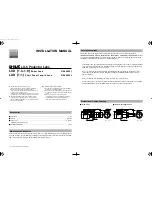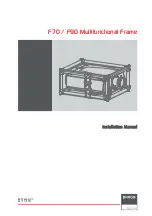
Chapter 1
Before Use
5
Please Rea
d
First
(5) USB
mouse
With a USB mouse connected, you can use the mouse to perform operations equivalent to those of the built-in touch panel
LCD monitor.
A mouse is required for operating on the menu displayed on an external monitor.
Mouse operation is convenient for the annotation function (tool menu), which adds lines and comments to images, and for
the measurement function (tool bar), which measures lengths and angles on the screen.
Please use a model whose operation is verified by Nikon. Not every USB mouse is compatible with the DS-L3.
(6) USB
printer
Photographed images can be directly printed by connecting the equipment to a printer that supports PictBridge.
(7) USB
hub
You will need a USB hub to use a USB memory stick, USB mouse, and USB printer at the same time. Please use a model
whose operation is verified by Nikon. Not every USB hub is compatible with the DS-L3.
Note: Only one tier of hubs can be connected to DS-L3.
(8) USB
cable
A USB cable is required for saving image files in a PC and for direct printing on a printer.
It is recommended to use an AB type cable that is compatible with USB 2.0.
USB cables
Use a USB cable with ferrite core for stabilization of USB transfer, reduction of noise generated from the DS-L3 and
its peripherals, and satisfaction of EMC standards.
(9) Network connection cable
A network connection cable is used for connecting DS-L3 to a network (LAN). Use a 10/100 Base-TX cable (category 5 or
5e).
With DS-L3 connected to the network, you can save image files in a PC through the network and control DS-L3 from a PC.
Network cables
•
To satisfy EMC standards, use a shielded cable.
•
When connecting the DS-L3 to a LAN, use a straight cable. When connecting the DS-L3 to a PC, use a crossed
cable.
Summary of Contents for DS-L3
Page 2: ......
















































